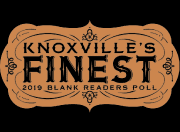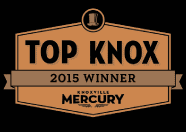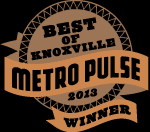
And we’re back! Read my part one here and Alan’s part one here. His part two will be along this afternoon.
Saturday, March 28: Big Little Ears
Thomas, our 5-year-old, is in a bad mood. He doesn’t want to go to mom’s weird music festival. He wants to stay home and play Minecraft.
He sulks into the Knoxville Art Museum, where Laraaji and Arji Oceananda have returned to Big Ears with their Laughter: The Best Medicine Playshop.
Thomas can’t fathom why grown-ups need a lesson on how to laugh or play, and I’d give anything to keep him in this innocence. To protect him from the inevitable disappointments, injustices and cruelties that life will bring. The slow-motion avalanche of injury that chisels away at our natural capacity for joy.
The best any of us can do, when life comes at us, is figure out how to laugh in its face. Laughter is resilience. “It’s the shortest distance between two people,” Laraaji and Arji say. “Laughing can heal the world.”
Thomas kicks a balloon around grumpily while I participate in the prescribed “laughter’cizes.” Some playful movement exercises catch Thomas’s eye. Curiosity wins out; he decides to give it a try.
Soon enough, we’re on the floor, rolling around, laughing uncontrollably. It’s a contagion of laughter. Thomas is in a giggle fit of epic proportions. It feels endless. Our stomachs ache from laughing.
Finally, it’s time for the savasana. Thomas settles on top of me like a blanket, happy and at peace. I love you. I laugh you.

As the playshop ends, Pangrok Sulap Live Printmaking begins in the sculpture garden. A Malaysian community-collective from Borneo, brought here through a slate of partnerships including UT, leads us through the process of printing a Knoxville-inspired banner. Part of the process involves us dancing on the print, barefoot to drums and chanting, to set the ink.
Everyone gasps at the big reveal. The print is hung to dry, with the others, in the warm spring breeze. Thomas is proud of his role. Art needn’t be made in silos.

Our next stop: Carla Kihlstedt & Present Music: intO tHe WiLd! at the Civic Auditorium. The first hour of this performance is “26 Little Deaths,” a contemporary classical musical interpretation of Edward Gorey’s The Gashleycrumb Tinies. It’s a rather macabre ABC book in which, on every page, a child meets an untimely demise.
A is for Amy who fell down the stairs.
B is for Basil assaulted by bears.
C is for Clara who wasted away.
D is for Desmond thrown out of a sleigh.
And so on.
Thomas is a wise old soul trapped in a 5-year-old mind and body. As are most children, really. He hears “A is for apple, B is for balloon …” and rolls his eyes. He doesn’t want your dumbed-down sh*t. He wants the real deal. The truth.
I can see the wheels turning in his head as he processes each little death (where were their parents?) and how it may or may not pertain to his own survival prospectus: Might I get run over while daydreaming on a train track? Sure. Might I disappear down a bathtub drain? Probably not.

He’s still chewing on it all as we head to English indie rock Beak< at Mill and Mine then Maruja at Jackson Terminal. The latter is described as a “ferocious combination of punk, harsh noise and transcendent cosmic jazz” but it feels metal AF to me. We position ourselves up front but safely outside the range of mosh-pitting and crowd-surfing. The saxophonist (yes, there’s a sax) plays like a demon. We head bang. Thomas approves: “SICK!”

It’s evening now and time to trade Thomas for my husband, Tommy, who is finally off work. After dropping Thomas at his Gram’s, Tommy and I make a beeline for ambient/electronic artist Steve Roach at Church Street United Methodist.
One of many reasons why it’s so great to have Tommy around is that he’s an actual trained musician. He majored in music composition and has performed from Beale Street to Bonnaroo. Whereas I tend to experience music in a sort of synesthetic fugue state, Tommy can see it as it might be worked out on paper – academically, in movements. “The architecture was classical,” he says after Steve Roach. “When the tonal center shifted you knew something big was about to happen.” Tommy can hear the future because he understands patterns. Whereas for me, I’m the eternal goldfish, surprised again by the castle each time I circle round.

Aside from a sojourn to a stripped-down Waxahachee and the hip-hop-ish clipping., we hunker down the rest of the night at Pilot Light’s What For? festival, dancing shoulder-to-shoulder with friends to an absolute knockout punch of a local lineup. Sometimes nothing in the world sounds better than what’s already in your backyard. Sometimes there’s no place you’d rather be than exactly where you are.

Sunday, March 30: Think Global, Listen Local
I can’t believe this festival is still going on. I am overstimulated and bone tired. Our house is trashed, but I reckon that’s a Monday problem. For now, there’s still more music to be heard.
I pull on leather pants and a t-shirt for a French black metal band you probably haven’t heard of — proper Big Ears fashion. The remnants of yesterday’s hot pink eyeshadow will do. And … we’re out the door, once more with feeling.
I sink into a balcony seat at the Civic Auditorium, where the Knoxville Symphony Orchestra is performing “Rhapsody in Blue Reimagined” with Lara Downes. The soaring theme and waterfalling piano fill me up. My electrolyte water starts to kick in. No turning back now. We’re all in this airplane together. I clasp my armrest tight as we collectively soar through the air.
Later I follow some friends from avant-garde pop-cellist Mabe Fratti (excellent!) to London-based pianist Eliza McCarthy at St. John’s Cathedral. St. John’s might be my favorite Big Ears venue, with its massive arches, warm light and acoustics that make it feel like the music is coming at you from every direction at once.
Eliza’s piano cascades around us like the prisms of a chandelier. I think it’s the most beautiful thing I’ve ever heard. She says something about a bridge in Italy, about watching the bridge recede in the distance, and it opens some floodgate inside me. Mascara tears start streaming down my cheeks. Little black rivers of wet. I can’t stop. I cry more than I did when my dad died, or my pianist grandmother. I wish she was here to hear this song.

I think I’m ready to go home. Well, almost. I catch one last show at The Standard, Joan as Police Woman. Her voice swells and recedes. I watch the lights – turquoise, violet, hot pink – twisting, fracturing and spinning through the kaleidoscope. She sings:
Don’t you feel for us
that we’re on the round and round?
Don’t you hear
the endless motor sound?
I’ve been on the ride before
It never stops at all
It never stops at all

My little reporter notebook is full, overflowing with scritch-scratchings from my subconscious, hurried thoughts and feelings captured during the shows. Much of it is barely legible. Sometimes, in the dark, I move my pen across the page just to stay in motion, hoping pretend-writing might somehow imprint my fleeting impressions into memory.
One thru-thread weaves in and out of my notes, a half-baked idea involving the intersection of the local and the global. Big Ears’ international presence, both onstage and in the audiences, serve as a reminder that the global economy of ideas, of art, of everything is corporeal and not just digital. We are connected across borders in ways that are easy to forget or willfully ignore. One moment from this week: when Ukrainian band DakhaBrakha said “Thank you for supporting our country” and received a standing ovation from the entire Tennessee Theatre.
Big Ears allows us to zoom out, and then zoom in, back and forth, again and again and again until they start overlapping into one.
The week is also a reminder of just how special Knoxville’s arts scene really is. It’s hard to measure how much is innate, but certainly it is institutional. Jack Neely, director of the Knoxville History Project, spoke to a packed Knoxville Visitor’s Center at the festival’s opening about our city’s musical roots—early blues, country, jazz, rock and experimental sounds—all intertwined and evolving through decades.

I recently unearthed from our basement a bootleg copy of Cumberland Avenue Revisited: Four Decades of Music from Knoxville, Tennessee. Published in 2003, the collection features dozens of micro-histories and essays documenting various eras of local music — the artists, the venues, the vibes. “What we want to do here,” editor Jack Rentfro writes, “is celebrate Knoxville’s consistency at producing world-class musicians from one generation to the next.”
Of course, we can’t afford to be insular; fresh influences are essential. Our local arts scene needs air, room to breathe, and Big Ears offers an annual dump of sonic revelations that blow the cobwebs out. But it deserves our attention, support and respect year-round. It’s a resilient yet fragile ecosystem—never entirely self-sustaining, never guaranteed. We must look after our own and guard it fiercely.
Visit art galleries. Get out to live music. Give money if you’re able. Make art yourself if you want to. There are so many vehicles for participation available. If you love Big Ears, keep an eye on Pilot Light, the Old City nonprofit venue that has been an incubator for so much creative, independent and experimental music and performance for 25 years. They’re doing this work all the time.
As Jack Rentfro wrote in Revisited, “Knoxville—never cool. But what a source of cool.” It’s a contradiction that feels about right. Knoxville doesn’t market itself as a self-important cultural capital, but it quietly produces the kind of raw, authentic creativity that can’t help but kaleidoscope outward. Patterns repeat. The pieces don’t always fit neatly, but tilt it just so and it just might take your breath away.












Recent Comments